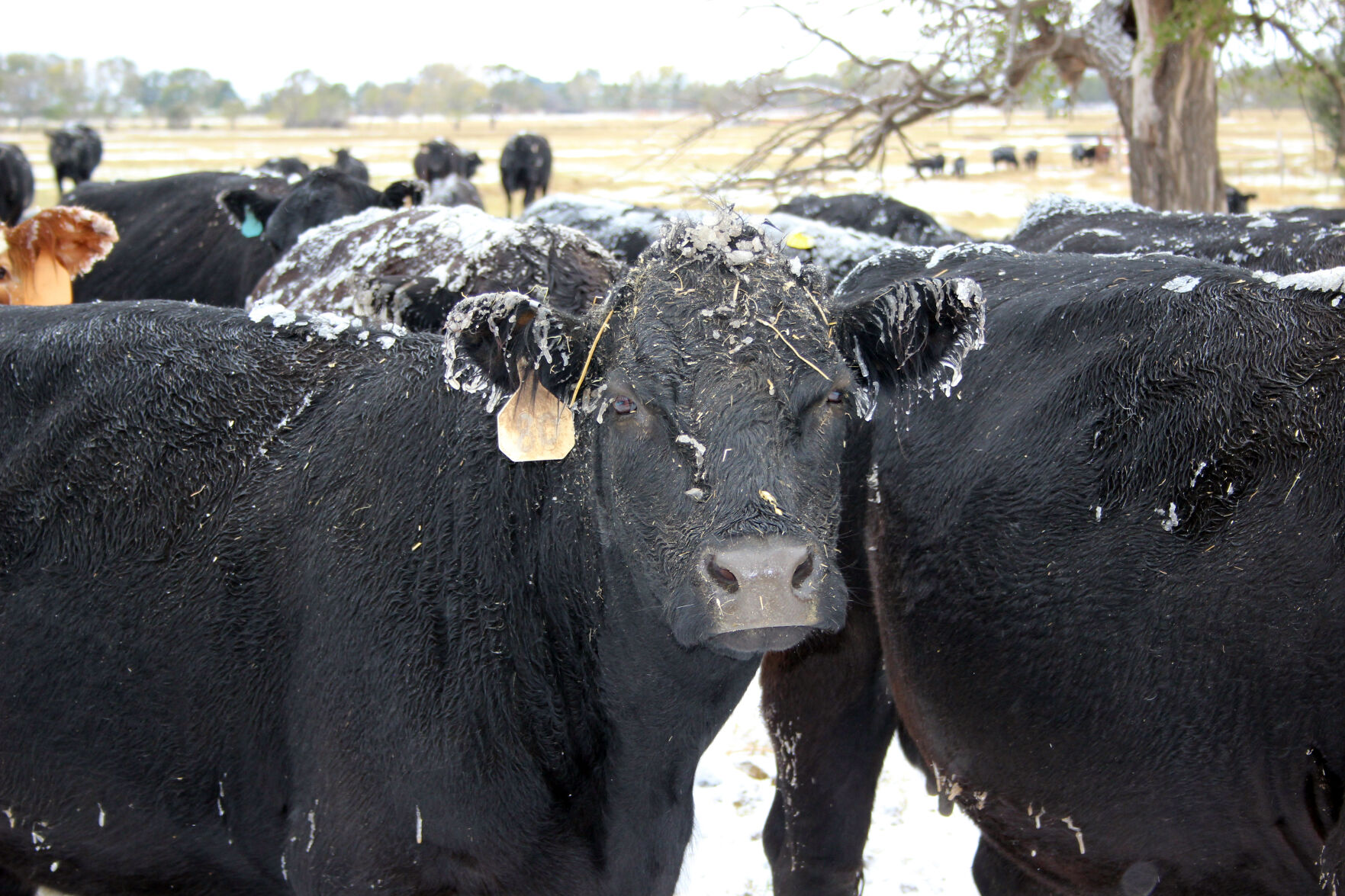Before long these sunny days will turn to bone chilling winter mornings of breaking ice and haying cattle, and ranchers should be vigilant to not get left out in the cold when it comes to managing winter feed costs.
David Lalman, animal science professor and Extension beef cattle specialist at Oklahoma State University, spoke about tactics to maintain body condition during the winter months and make economical choices in cattle feeding with feed costs on the rise during a recent OSU webinar.
“Our goal is to get through the winter with the least possible costs with optimal animal performance,” Lalman said. “It has been proven time and time again that the key to this is body condition score, and the most important time that the body composition actually influences a beef cow’s performance is the body condition score she is in the day she calves.”
Lalman went on to say body condition score prior and after calving does have an influence on postpartum interval and the first service conception rate, but those impacts are not nearly as dramatic as the influence it has the day of calving.
“We recommend producers aim their management systems, genetics, supplementation program, grazing program to where your cows calve at a body condition score of five and because heifers are still growing and they require a longer postpartum interval at the same body condition score, we recommend calving 2-year-olds at a body condition score of six, which reduces the post-partum interval,” he said.
When it comes to adding condition to cows, Lalman said it is much more efficient and less costly to gain condition if calves are weaned earlier because milk production increases nutrient requirements and reduces nutrients available for maternal tissue gain.
“It’s less expensive to maintain those cows through the winter in a decent body condition than it is to make up ground when forage is low quality in the winter or with purchased or harvested feeds,” he said.
For some producers, weaning earlier would require those calves to be managed separately, especially if they do not intend to market
them right away. However, Lalman said the feed is more efficiently utilized by those young, growing calves than it is in a lactating cow.
“When you increase energy and protein in a lactating cow, about 60% of those increased nutrients goes to supporting milk production,” he explained. “Only about 40% of those increased nutrients goes to maternal tissue weight gain. It is very difficult and expensive to put weight on lactating cows, plus those lighter weaned calves are very efficient in terms of energy utilization for weight gain.”
When cows need to gain condition, Lalman said the other option is to start a supplementation program earlier.
“This is assuming there is adequate standing forage or adequate moderate- to low-quality hay for dry cows, and this tactic is especially effective if there is a protein deficiency,” he said. “Protein supplementation has shown time and time again that it is very effective at increasing forage intake and at the same time, increasing forage digestibility. With those two things added together, you get nearly a 50% energy improvement, assuming a protein percentage of between 5 to 7% protein.”
Another way to save on feed costs is to sell bred cows prior to winter feeding months to cash in on their value and not foot their grocery bill all winter.
“If you’re limited in forage availability, hay prices are really expensive, supplement costs are going to go up and if cows are in a body condition score of five or above, why not market those cows right away with the cull cow market holding up the way it has,” Lalman said. “The animals that are furthest from bringing revenue back into the operation are those replacement animals and they’re going to cost a considerable amount if it’s a spring calving operation and it’s going to be a long time before they wean a calf.”
Lalman also suggested a restrictive breeding season as a tactic to manage feed costs.
“It’s not something we usually think about in terms of winter feeding costs, and the die is already cast for that this year, however, if you think about uniformity in a cattle operation, a cows’ stage of production needs to be relatively uniform for us to deliver proper winter nutrition,” he said. “If you have a year-round calving program where a good number of your cows calve in the spring, but 30 to 40% calve in the summer and then some of them in the fall, but manage them all together as a group, you’ve got some cows that will get overfed and some will be underfed. You can fine tune your winter supplementation program if their stage of production is more uniform.”
Additionally, Lalman recommended separating mature cows from 2-year-olds and, if possible, separate 2- and 3-year-olds.
“Two-year-olds generally do not do very well if they’re managed with mature cows, because the 2-year-olds do not consume feed as rapidly as older cows. They cannot compete with mature cows and give up body condition at a rapid rate.”
Sign up for HPJ Insights
Our weekly newsletter delivers the latest news straight to your inbox including breaking news, our exclusive columns and much more.
Finally, he suggests producers consider alternative protein sources to distillers grains as they have become extremely expensive this year. Through pandemics, supply chain disturbances and mandates, we have all learned to adapt and producers must do the same to make nutritional and economical choices for their livestock.
“If you can subtract the nutrients supplied by the forage from the nutrients required of the animal you can have confidence in what you provide in a supplement as far as protein, energy, minerals or vitamins,” Lalman said.
Lacey Vilhauer can be reached at 620-227-1871 or [email protected].



